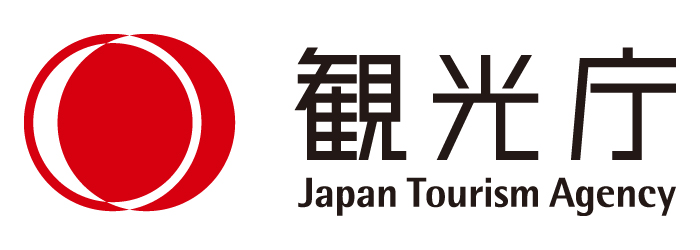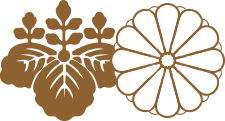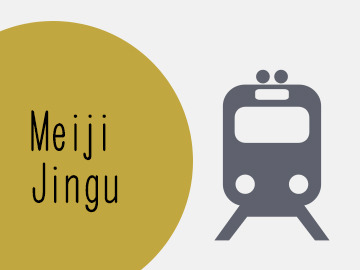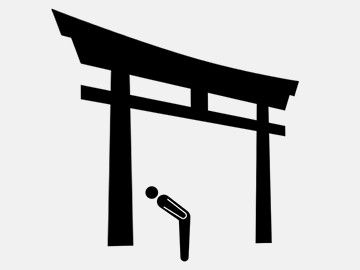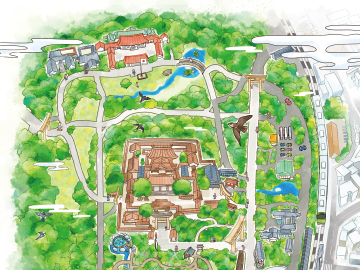Precinct map
1
1
1
1
1
1
2
2
2
3
4
5
6
7
8
9
11
12
13
14
15
18
20
21
22
JR Harajuku Station
↓Towards Shibuya Station
Tokyo Metro Meiji-jingumae Station
←Towards Sangubashi Station
→Tokyo Metro Kita-sando Station
↑Towards Yoyogi Station
![]()
![]()
![]()
![]()
![]()
![]()
![]()
![]()
![]()
![]()
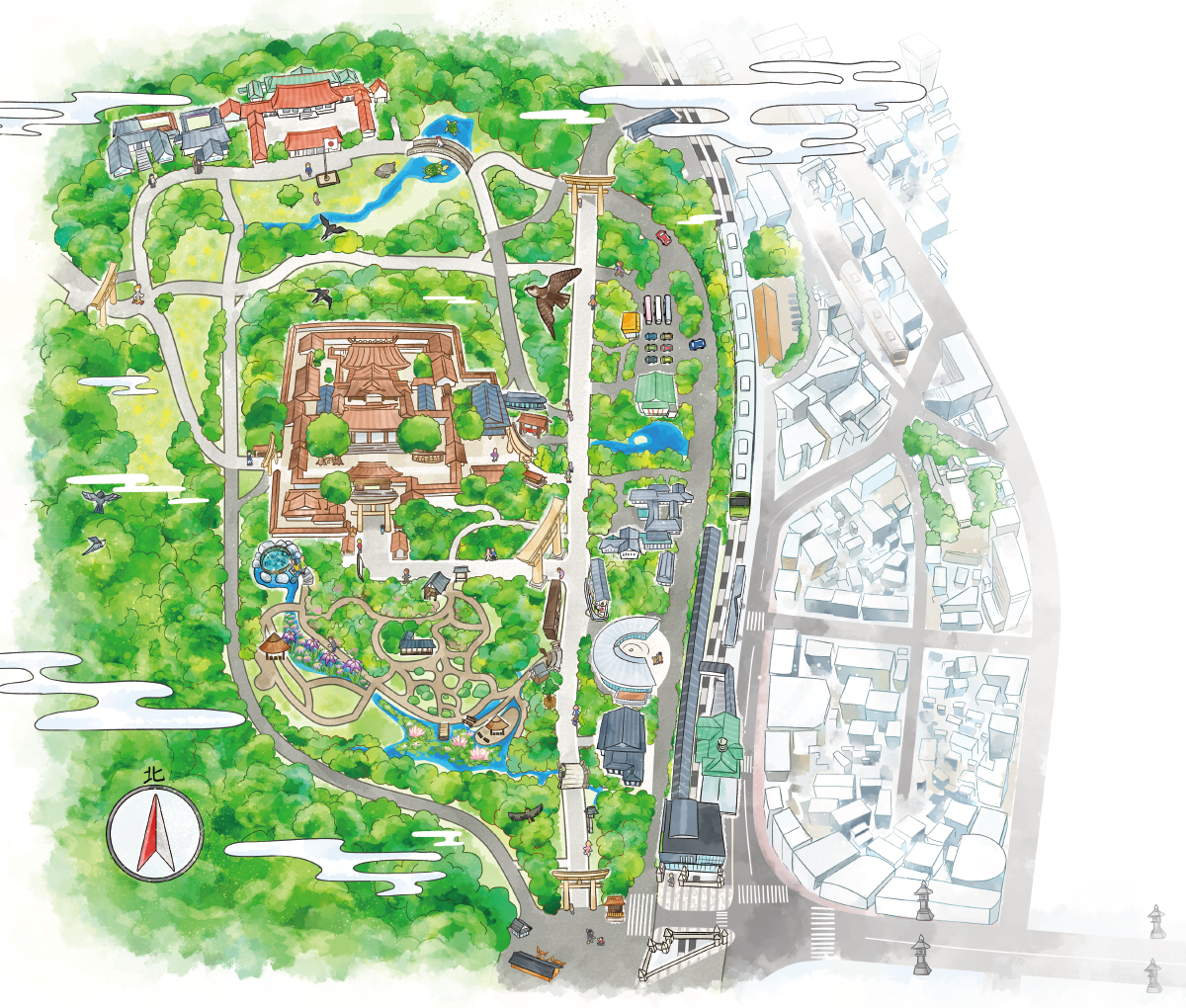
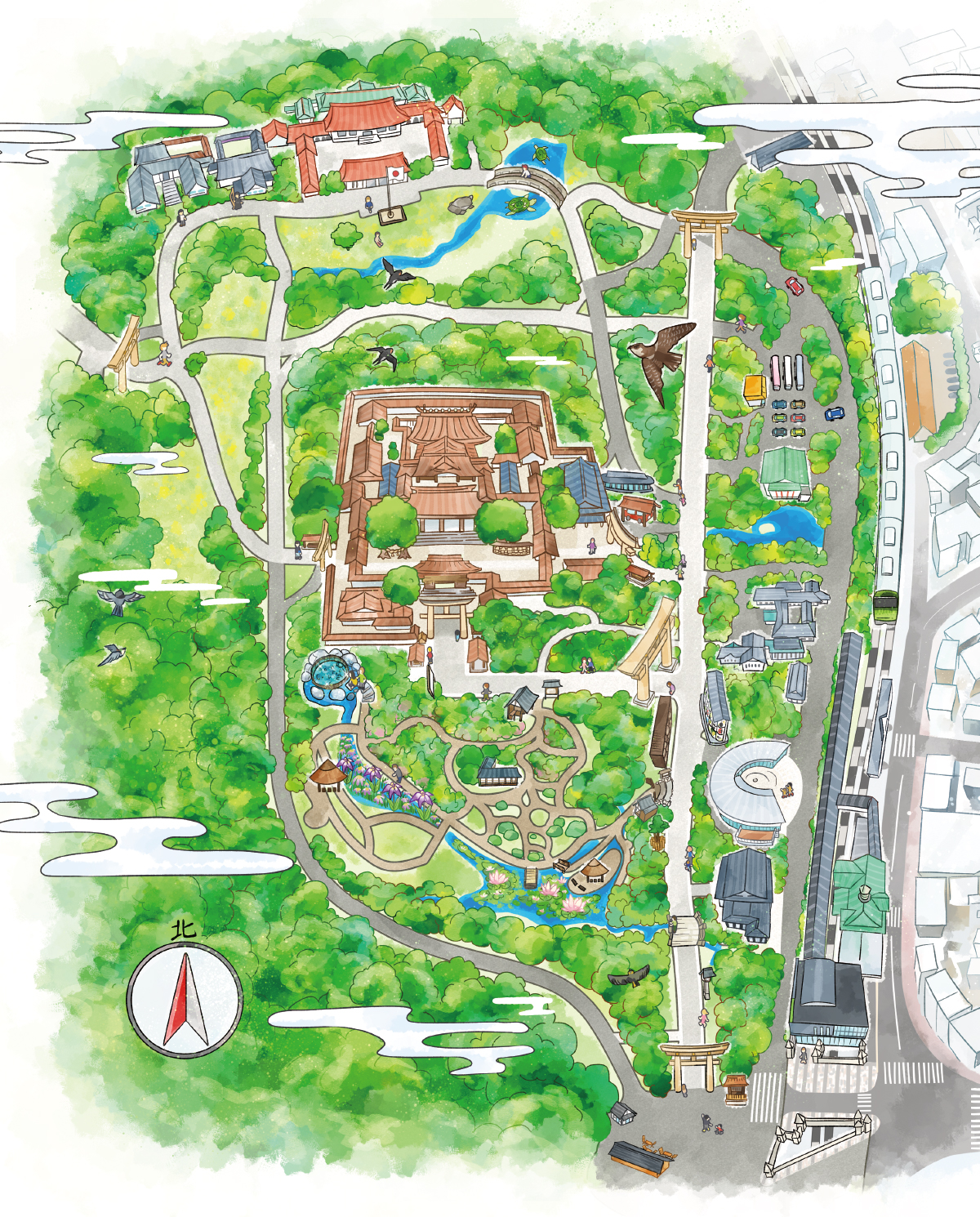
- Torii Gate
- Temizusha (Water font)
- Main Shrine
- Minami Shinmon
- Kaguraden
- Juyosho (Amulet office)
- Meoto Kusu
- Ema-kake (Votive tablet rack)
- Vehicle purification
- Inner Garden
- Iris Garden
- Kiyomasa’s Well
- South Pond
- Sake Barrels/ Wine Barrels
- Ootorii
- Meiji Jingu Museum
- Forest Terrace (Restaurant & souvenirs)
- Café “Mori no Terrace”
- Treasure Museum (Currently closed)
- North Pond and Lawn
- Sanshuden Hall
- Meiji Jingu Kaikan Hall
- Shiseikan Dojo
-
Torii Gate1
A torii, which is a gate that consists of two pillars topped with a double lintel and a tie beam, marks the entrance to a shrine, separating the sacred world from the secular. This torii is in the myojin style, which is differentiated by a curved upper lintel and a long tie beam.
There are three sixteen-petal chrysanthemum-shaped crests decorating the upper lintel. The chrysanthemum crest is the crest of the Imperial Family and indicates the connection between the Imperial Family and Meiji Jingu. The crest has been incorporated throughout the shrine grounds, for example in the design of the lanterns.
This is the first of three torii along the Minami sando approach to the main shrine. You will see people bowing to show respect when they pass under a torii as they enter and leave the shrine precincts. -
Temizusha, Ritual Purification2
When entering a shrine, visitors purify themselves ritually before proceeding toward the main sanctuary. This is done at a temizuya, ritual purification building. There are ladles provided so that you can wash your hands and cleanse your mouth. Everyone, regardless of faith, is welcome to participate.
-
Honden, Main Shrine3
The honden main shrine is the most sacred building in the Meiji Jingu shrine. The inner sanctum is at the heart of the main shrine, and is where the kami deities are enshrined. Many rituals are carried out daily inside the inner sanctum, including the offering of sacred food and prayers known as onikkusai, which is held at 8 a.m. and 2 p.m. every day.
The honden and the buildings around it are of Japanese cypress wood, while the roofs are clad with copper. The timber used is mainly from Kiso in Nagano Prefecture, a district famous for the cultivation of large Japanese cypress trees.
The main shrine is built in the nagare zukuri style, which is a popular style of shrine architecture found throughout Japan. In this style of architecture, the roof at the front of the shrine is much longer than at the back, as the front roof is extended to cover the steps up to the shrine building.
The structures of the honden include the noritoden or Shinto prayer recital hall, the naihaiden, inner shrine hall, and the gehaiden, or outer shrine hall. The gehaiden is at the front of the shrine, and is where visitors pray.
The main shrine building was originally completed in 1920, but was burnt down during the air raids at the end of World War II. The present building was completed in 1958. For reasons of fire proofing, copper was used for the roofs of the new buildings rather than the tree bark which had been used for the original buildings. -
Minami Shinmon, Main Gate4
This gate is the most important of the three gates that open onto the main shrine complex, and is the main entrance. The importance of this entrance is reflected in the gate's being a two-story building, whereas the other two gates are single story. The gate was built in 1920 when Meiji Jingu was dedicated, and is one of the few structures to have survived the air raids of World War II. The gate is made from Japanese hinoki cypress, roofed with copper.
If you look closely, you will see small heart-shaped patterns carved into the ornamental metal fittings and woodwork. This is a design feature with ancient roots known as inome in Japanese. Today, the Chinese characters for the word might be read as ‘eye of the wild boar’, but it also has the nuance of warding off fire. This was of particular importance when most structures in Tokyo were still made of wood.
When passing through the gate, be sure to step over the wooden beam, not on it. It is considered respectful to bow your head while passing through. -
Kaguraden, Hall of Shinto music and dance5
This building is the Kaguraden, where devotees can receive blessings or participate in Shinto rituals. Kigansai are held here regularly at 9.30 am. A kagura, or sacred music and dance performance called the yamato mai, which is unique to Meiji Jingu, is performed as an offering to the kami. Kigansai would include a baby’s first shrine visit and a child’s shichi-go-san, a celebratory occasion held in November for girls turning three or seven and boys turning five. Kigansai are also held to ward off evil, usually at a specific age (25 or 42 for men, 19 or 33 for women).
The building was completed in 1993 and has three floors, two of them underground. The main ceremony hall on the ground level can accommodate up to 800 people. Please note that entry to the Kaguraden is reserved for those taking part in a ceremony. Vermillion shrine seals or goshuin are available in the Kaguraden as a token of your visit to the shrine. These are usually entered into a goshuincho, a book dedicated to goshuin. -
Juyosho, Amulet Office6
Amulets known as omamori and protective talismans known as ofuda are available here. There are omamori for traffic safety, health, or success in education. Meiji Jingu also offers the sowa mamori, a special omamori for luck in love, infused with the aroma of camphor trees and inspired by the Meoto Kusu husband and wife camphor trees. Omamori are usually attached to or put into a bag, purse or pocket, and kept until they have fulfilled their purpose. The amulets should not be opened.
-
Meoto Kusu, Camphor Tree Couple7
This pair of camphor trees is known as Meoto Kusu, or ‘husband and wife camphor trees’. They are joined by a rope called a shimenawa, which signifies their sacred connection. The shimenawa in Shinto is used to indicate sacredness, and also wards off evil spirits.
These two trees were planted as saplings when Meiji Jingu was established in 1920, and have been growing here side by side ever since. Hence they are seen as a symbol of a happy, solid marriage like that of Emperor Meiji and Empress Shoken, and of a healthy family. The trees are a popular spot for people searching for a partner, and for those looking for success in marriage. -
Ema-kake (Votive tablet rack)8
Ema, or votive tablets, are wooden plaques with a picture specific to the shrine on one side, and a blank space for writing a message of gratitude or prayer on the other. They are available at the juyosho amulet office for ¥ 500 and decorated with either a Meiji Jingu crest or, over the New Year period, the zodiac animal for that year.
The word ema literally means ‘picture of a horse’, and dates back to ancient times when devotees would donate horses to shrines. Over time pictures of horses came to replace actual horses, and further developed into the ema of today.
Messages written on ema can be anything from pledges to the kami to expressions of gratitude, aspirations for the year, or other heartfelt messages. Messages can be written in any language and by anyone, regardless of faith. Once you have written yours, please hang your ema on the votive tablet rack, which surrounds a camphor tree. The ema are offered by the shrine priests to the kami at the mikesai, held every morning. The tablets are eventually burned in a ritual fire. -
Vehicle Purification9
This covered parking spot is used for vehicle purification rituals. When a car or other vehicle is brought here, a shrine priest will perform a ritual to ward off bad luck, and pray for safe driving free of accidents. People normally do this when they buy a new car.
-
Consecrated Sake Barrels14-a
Emperor Meiji (1852–1912) encouraged the technological development of many domestic industries, including the sake production industry, as part of the modernization of Japan. These straw-covered sake barrels are offered to Meiji Jingu annually by the members of the Meiji Jingu Nationwide Sake Brewers Association. The brewers make this donation to show their deep respect for the enshrined souls of Emperor Meiji and Empress Shoken (1849–1914). The barrels, which are decorative and empty, are offered to the kami deities along with the sake in bottles.
Sake plays an important role in Shinto. It is considered to be one way to connect people and the kami. While sake is normally called nihonshu in Japanese, the sake used at shrines is referred to as miki or omiki, written with the Chinese characters for ‘kami’ and ‘alcohol’. Omiki is offered daily to the kami, and distributed to followers after rituals and festivals held at the shrine.
The juxtaposition of wine and sake at Meiji Jingu is symbolic of the culture of the Meiji period. Led by the efforts of Emperor Meiji, the combining of overseas influences with Japanese traditions was a key aspect of this period. -
Barrels of Consecrated Wine14-b
During his reign, Emperor Meiji (1852–1912) was keen to adopt Western culture and constructs, while maintaining Japan’s age-old traditions. Japanese society followed the Emperor's lead in his adoption of Western technologies and traditions.
The Emperor loved Western cuisine and wine. In memory of Emperor Meiji and his love of French wine, a number of famous wineries in the Bourgogne region of France each donated a barrel of wine to Meiji Jingu in 2006. Wine donated from Burgundy is now offered to the shrine every year.
These barrels are a symbol of the strong intercultural ties enjoyed by France and Japan. They are donated in the expectation of the continued enjoyment of a long and fruitful relationship between the two countries, and with profound gratitude for the spirit of friendship and for world peace. -
Ootorii, Great or Second Torii Gate15
This torii is the largest wooden myojin style torii of its kind in Japan, standing 12 meters tall and 17.1 meters wide. Each pillar is 1.2 meters in diameter, and together the two pillars weigh 13 metric tons. The torii is built in the same style as the first torii at the southern entrance, with curved upper lintels. It is located at the intersection of the northern and southern approaches to the main shrine, and is also known as the ootorii or ‘large torii’. This torii has come to symbolize Meiji Jingu for many because of its impressive size.
The original ootorii was built in 1920 from a 1,200-year-old Japanese cypress from the Alishan Mountain Range in Taiwan. Unfortunately, it was destroyed by lightning in 1966. The current ootorii was made from a 1,500-year-old Japanese cypress.
The tree that provided the wood for this torii was found on a hillside on the Danda Mountain in Taiwan by a Tokyo-based timber merchant. The merchant had vowed to help rebuild the tori after the original was destroyed by lightning in 1966, in order to thank the kami for protecting his business. Since no tree of the right size could be found in Japan, he visited Taiwan many times in search of just the right tree. With considerable help from many people, the tree was finally cut down and transported to Meiji Jingu. The new torii was completed on December 23, 1975. -
Kita Ike and Shibachi Lawn (North Pond and Lawn)20
The expansive Shibachi lawn is a quiet place to relax and enjoy nature, against the backdrop of the impressive contrast of the skyscrapers of Shinjuku in the distance.
Various species of ducks, including mandarin ducks, can be seen swimming on the Kita Ike, or North Pond, near the Shibachi lawn. For the annual hina matsuri, the doll festival or girls’ festival celebrated on March 3 (the exact date of festivities may differ), the pond is used for the nagashi bina ritual. Dolls made from soluble paper are set afloat on the water. In this ancient tradition, impurity is ritually transferred to the paper doll and washed away.
Next to the pond is the kame ishi, literally ‘turtle stone’, after its likeness to the animal. Along with Kiyomasa’s Well inside Meiji Jingu Gyoen, this is popularly considered to have strong positive spiritual connotations.
The lawn is part of the shrine grounds, so please relax and enjoy the view but remember that you are still within the shrine. Please dress and behave appropriately. The drinking of alcoholic beverages is not permitted here.
